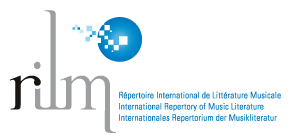Grupo de Renovación (1942-1948). Neoclasicismo musical en Cuba.
Palabras clave:
neoclasicismo, hispanidad, afrocubanismo, grupo, identidadResumen
La historia del neoclasicismo musical en Cuba comenzó en 1942, cuando varios compositores crearon el Grupo de Renovación con la intención de cambiar las preferencias estéticas de un público que cultivaba la música como parte de lo más sofisticado de la vida social habanera. Los objetivos y acciones del Grupo pueden entenderse como una postura intelectual que reflejó el pensamiento musical de su tiempo. Su fundamental propósito fue insertar la música cubana dentro de la tradición musical universal. El neoclasicismo, entendido como moderno eclecticismo, implica la presencia de influencias folclóricas en las formas de la música occidental, donde se combinan los géneros y formas de la música clásica con los sonidos autóctonos de las naciones latinoamericanas, principal modo de crear la diferencia. ¿Cómo los compositores cubanos definen el neoclasicismo y cómo la musicología concilia identidad nacional, (hispanidad y afrocubanismo), pensamiento postcolonial y neocolonial, influencias externas y transgresión de paradigmas clásicos? ¿Cómo funciona la inserción de sonidos afrocubanos en la sonata clásica dentro del contexto de la música de concierto en Cuba?
Descargas
Descargas
Publicado
Número
Sección
Licencia
Derechos de autor 2018 José Luis Fanjul

Esta obra está bajo una licencia internacional Creative Commons Atribución-NoComercial 4.0.
Atribución/Reconocimiento-NoComercial 4.0 Internacional
https://creativecommons.org/licenses/by-nc/4.0/
Usted es libre de:
- Compartir — copiar y redistribuir el material en cualquier medio o formato.
- Adaptar — remezclar, transformar y construir a partir del material.
- La licenciante no puede revocar estas libertades en tanto usted siga los términos de la licencia
Bajo los siguientes términos:
- Atribución — Usted debe dar crédito de manera adecuada, brindar un enlace a la licencia, e indicar si se han realizado cambios. Puede hacerlo en cualquier forma razonable, pero no de forma tal que sugiera que usted o su uso tienen el apoyo de la licenciante.
- No Comercial — Usted no puede hacer uso del material con propósitos comerciales.
- No hay restricciones adicionales — No puede aplicar términos legales ni medidas tecnológicas que restrinjan legalmente a otras a hacer cualquier uso permitido por la licencia.
Avisos:
No tiene que cumplir con la licencia para elementos del material en el dominio público o cuando su uso esté permitido por una excepción o limitación aplicable.
No se dan garantías. La licencia podría no darle todos los permisos que necesita para el uso que tenga previsto. Por ejemplo, otros derechos como publicidad, privacidad, o derechos morales pueden limitar la forma en que utilice el material.






